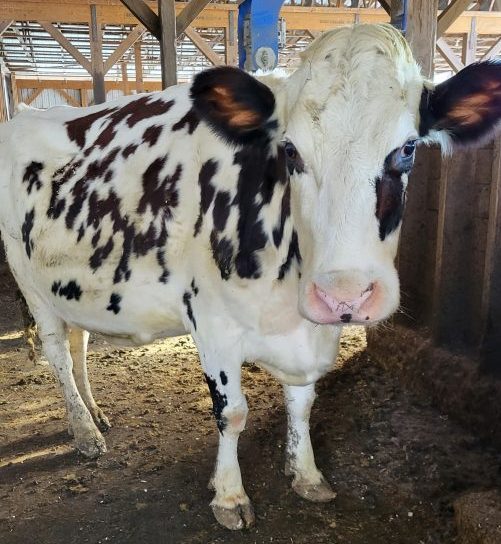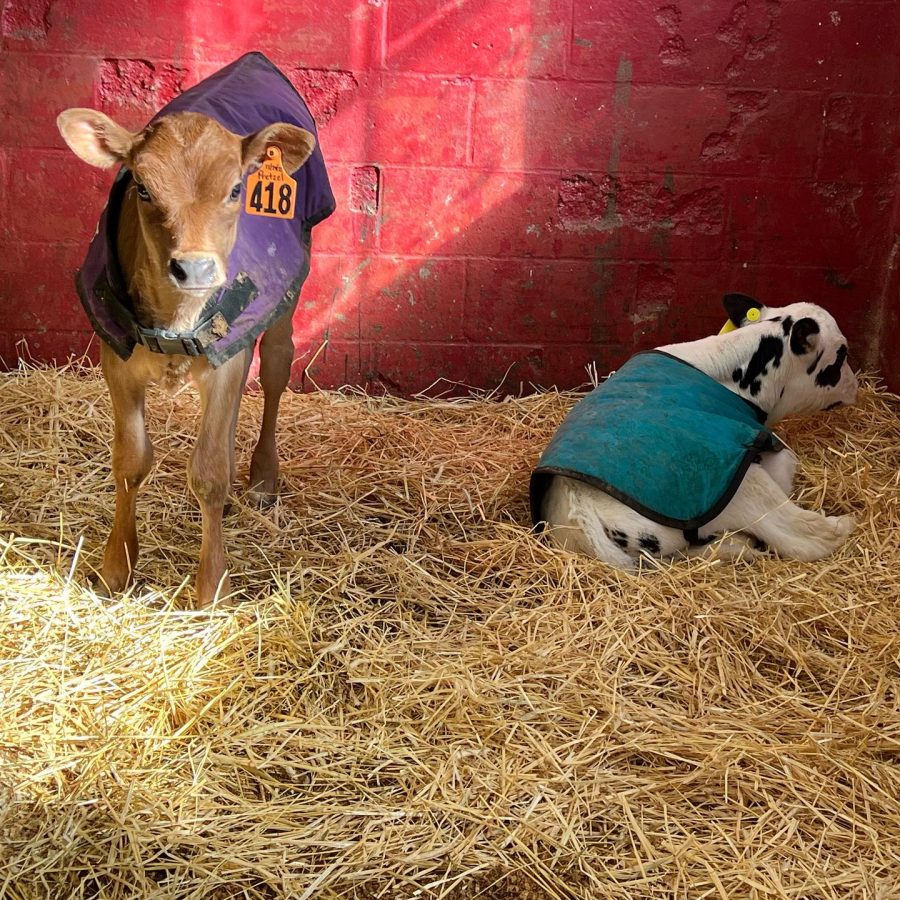Cow Comfort in Cold Weather

Hopefully you’ve been able to weather this arctic blast inside with your feet warming by the fire. If you’re a dairy cow in Maine, well, you probably stayed warmer than the farmers taking care of you.
I checked in with Laura Chase of Chase’s Organic Dairy Farm up north in Mapleton this morning, and she said the cows in their tie stall barn faired well. “All the cows are inside for the day. All are fed and content.”Even though the windchill outside was about -45, the barn stayed about 50-55 degrees on the inside, and they kept an exhaust fan running for ventilation. She said the milk truck came to do an early pick up before the temperature dropped so that the milk wouldn’t freeze on the truck.
At the Milkhouse in Monmouth, farmers Caitlin Frame and Andy Smith house their cows in a “bedded pack” – manure and bedding is allowed to build up so that as it composts, it generates its own heat. Fresh bedding is continuously added to the top to keep cows clean. Andy said they added shredded mulch hay instead of sawdust to the pack “to give the cows a deep insulating layer to nest into during this cold snap. As long as you give livestock a dry place out of the wind, they really don’t seem to mind the cold as much as we do.”
At the Wright Place in Clinton, farmer Caleigh Wright said that they “keep the cows and calves well-bedded year-round so that they stay high and dry, but in the winter it’s extra important. A wet animal is a cold animal, and a cold animal is using all her energy to stay warm instead of focusing that energy on growing (calves) or milk production (cows). During the cold, we check the calving barns more often to ensure that the newborns are moved into our hotbox as soon as possible. Our hotbox is basically a large, insulated calf hutch with heat lamps and deep straw bedding. The calves stay in the hotbox until they are dried off. At that point we put a calf jacket on them and move them to their own straw bedded pen. They keep their jackets on for 3-4 weeks.”

At Stonyvale Farm in Exeter, where they have a large open calf barn for group housing, Kate Fogler says they also utilize a calf warmer to dry off newborns quickly in the cold. Each calf then gets a coat.
“We make sure the pens have extra bedding and I have started adding some extra straw to give them places to snuggle into,” she says. “Our calf barn has heated floors that we turn on in the winter too. With them being to able to eat on the auto feeder they can come have an extra meal or two if they get hungry. As always we make sure they are eating adequate amounts of milk and keep a close eye on them for any issues.”
Both Caleigh and Kate said if surfaces in the cow barns or on the way to the milking parlor become icy, they will put sand down to give them a safer surface on which to walk. Kate adds that they try to keep things as consistent as possible for the cows as they are truly creatures of habit. Otherwise during the extreme cold at Stonyvale, they will “watch/plug in equipment, have extra people around in case there are problems, make sure there are places for employees to go to warm up. We also feed the cows more since they require more energy for maintenance.”


